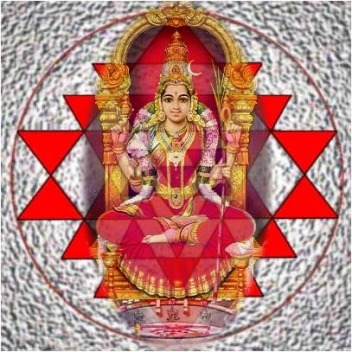
Known for its aesthetic depiction of the mother goddess, the Saundarya Lahari by Sri Sankaracharya is complex and beautiful poem in Sanskrit. A study of Saundarya Lahri helps us understand the complex mythology surrounding the goddess. In it Tripura Sundari is depicted as the energy that pervades all manifestation creating, protecting and destroying everything that exists. Following are the myths in the poem that explain how this is done.
- According the Soundarya Lahari the world is created when Brahma collects a minute particle of dust from the goddess Tripura Sundari’s feet and then creates the wondrous, limitless and infinitely mysterious universe.
- The world is sustained when Adisesha, the ancient serpent and a form of Vishnu, supports the universe on his thousand jewelled hoods.
- The world is destroyed when Shiva takes the universe made of the dust of the goddess’s feet and crushes it into sacred ashes, which he smears all over his body.
- According the Soundarya Lahari the world is created when Brahma collects a minute particle of dust from the goddess Tripura Sundari’s feet and then creates the wondrous, limitless and infinitely mysterious universe.
- The world is sustained when Adisesha, the ancient serpent and a form of Vishnu, supports the universe on his thousand jewelled hoods.
- The world is destroyed when Shiva takes the universe made of the dust of the goddess’s feet and crushes it into sacred ashes, which he smears all over his body.
by Swetha Prakash
